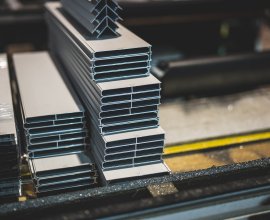Looking at gold products over the years, you can easily see the differences in their appearance. Even though they are made of one type of bullion, gold changes colour, which can mislead us. The differences can be explained to some extent by their origin, but not always. So, is it possible that we are delighted with counterfeiting? Of course not!
The classic variety of gold
The most popular and considered by most users to be the only one, shade of gold, is light yellow. This colour depends on the individually selected colour of the alloy of certain metals, which, by reacting with gold, influence the chemical level of its structure, causing changes in colour. By using their appropriately selected proportions, one can obtain gold of a truly untypical colour: blue, green and grey, and even pink, although such innovative solutions do not find many supporters among gold jewellery lovers. The same is true of the so-called ancient gold, which we prefer to see in museums rather than as a decorative element.
Why does gold change colour?
The composition of each piece of jewellery, considered gold, is based on alloys of other metals in its composition. This means that the colours that colour gold, coming from other precious metals, do not make gold stop being gold. So it is not a fake. Pure gold is very rarely used in the creation of jewelry, because it is too soft, it often undergoes deformations and other defects. In order to increase its strength and at the same time extend its durability, it is necessary to add appropriate hardeners, i.e. other metals, although the ratio of gold to the presence of other components may vary and depends on individual approach or order for a given type of jewellery. For example, in sample gold 333 as much as 67% of the alloy are metals other than gold, because this sample contains about 33.3% of pure gold. In the sample of 585 other admixtures represent about 41% of the alloy, the sample of 583 in popular jewellery imported from the Soviet Union could contain maximum 41.7% of copper, the remaining 58.3% was gold.
Gold - the creative invention of the goldsmith
The creation of metal alloys and gold is an individual process and not as simple as it seems at first sight. Gold changes color in the process of reaction with certain elements. When mixing the components, you should pay close attention to their concentration in relation to each other, because a slight deviation may cause the final effect to be far from the expected one. The most important is the "right colour" of the resulting alloy. Depending on the type and quantity of components used, it can take different shades, depending on the country in which we buy the product or the manufacturer who created the alloy. You can find red gold, pink or even green. However, this does not affect the value of the bullion and its pure gold content.
Appropriate gold conservation is the key to success
Having beautiful gold specimens in your case is not only a pleasure or satisfaction. Gold, like any other material, although very hard and considered durable, requires individual approach and special care. Before you start using it, it is worth reading the jewellery certificate to learn more about gold care and how to refresh it. It is also worthwhile not to expose it to harmful substances, or to clean it on your own, because it may end up being permanently damaged.









